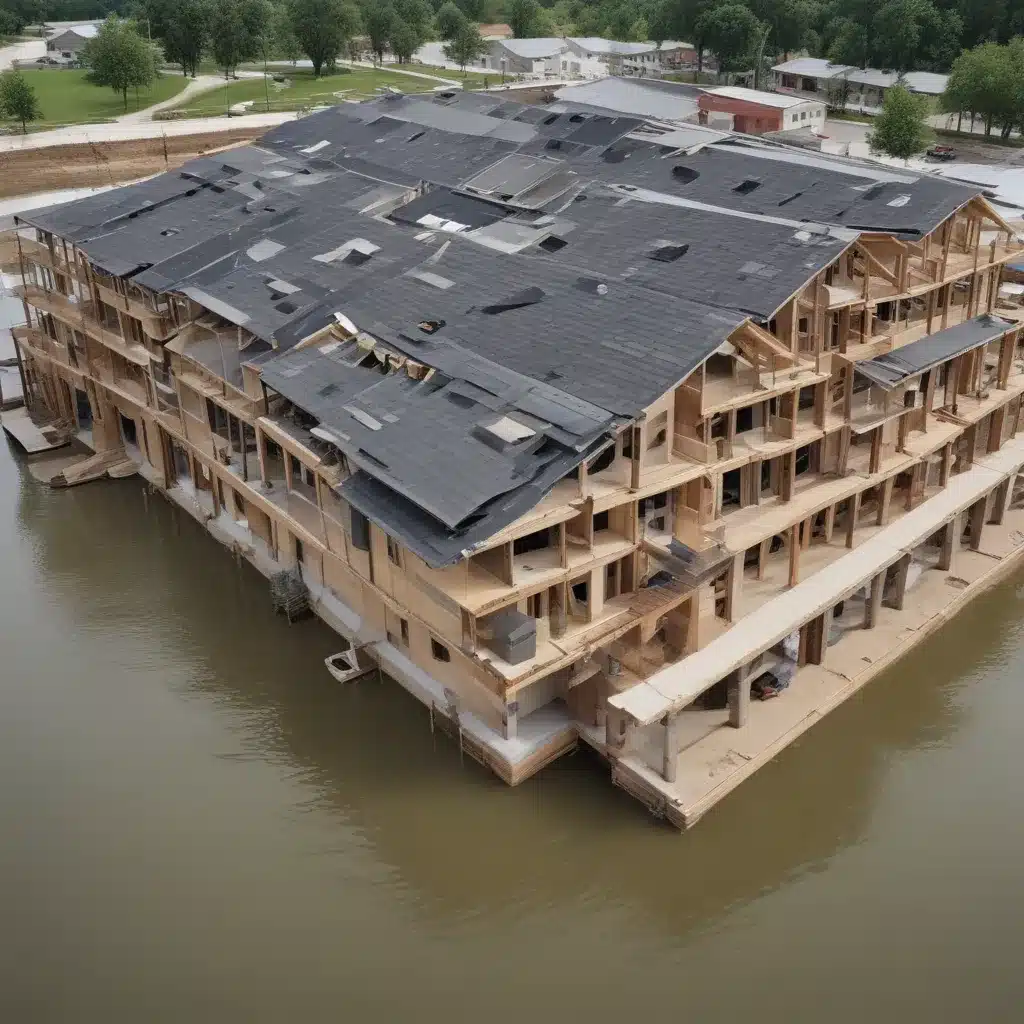
As climate change continues to drive an increase in the frequency and intensity of extreme weather events, the need for innovative flood-resilient construction practices has never been more pressing. Flooding poses a significant threat to communities around the world, causing devastating damage to buildings, infrastructure, and lives. However, the field of flood control is evolving rapidly, with designers, engineers, and architects developing cutting-edge solutions to mitigate flood risk and protect our built environment.
Flood Risk Assessment and Mitigation Strategies
At the core of any effective flood control system is a thorough understanding of the flood risks facing a particular region. Flood risk assessment involves a comprehensive analysis of hydrological data, flood mapping, and vulnerability assessments to determine the likelihood and potential impacts of flooding. Armed with this critical information, flood control experts can then develop tailored mitigation strategies to protect communities.
Structural interventions, such as the design and construction of levees, dikes, and storm surge barriers, play a crucial role in flood control. These physical barriers are engineered to withstand the force of floodwaters and prevent inundation. Equally important are non-structural measures, including land use planning, floodplain management, and building regulations, which aim to reduce exposure and vulnerability to flooding.
Sustainable Drainage Systems and Green Infrastructure
In recent years, there has been a growing emphasis on sustainable drainage systems (SuDS) and the incorporation of green infrastructure into flood control strategies. These nature-based solutions harness the power of natural systems to manage stormwater runoff and mitigate the impacts of flooding.
Permeable surfaces, such as porous paving and permeable concrete, allow water to infiltrate the ground rather than pooling on the surface and overwhelming drainage systems. Bioswales, retention ponds, and other green infrastructure features capture and slow the flow of floodwaters, reducing the risk of flash flooding and erosion.
By integrating these sustainable drainage systems into the built environment, communities can not only enhance their flood resilience but also reap the additional benefits of improved water quality, enhanced biodiversity, and reduced urban heat island effects.
Flood-Resilient Construction Techniques
As the frequency and intensity of floods continue to increase, architects, engineers, and construction professionals are developing innovative building techniques to create structures that can withstand the devastating impacts of floodwaters.
Elevated foundations, such as those built on stilts or piers, lift living spaces above anticipated flood levels, protecting the structure and its occupants. Flood-proofing techniques, including the use of waterproof sealants, coatings, and flood-resistant materials, further enhance a building’s ability to resist water intrusion and damage.
More advanced solutions, such as amphibious and floating structures, take flood resilience to the next level. These innovative building designs allow structures to rise and fall with the water, maintaining a safe and dry living environment even when the surrounding area is inundated.
Innovative Flood-Resilient Building Materials
The selection of building materials plays a critical role in the flood resilience of a structure. Flood-resistant concrete, engineered to withstand prolonged water exposure without compromising structural integrity, is becoming increasingly popular in flood-prone regions. Innovative waterproof sealants and coatings can also be applied to traditional building materials to enhance their water-resistant properties.
Beyond these traditional construction materials, lightweight structural components, such as those made from advanced composites or even bamboo, offer the strength and durability to resist flood damage while reducing the overall weight of the building. These innovative materials can significantly improve a structure’s ability to withstand the forces of floodwaters.
Architectural Design Solutions for Flood Resilience
Architects and designers play a crucial role in creating flood-resilient buildings and communities. Flood-adaptive building layouts, with strategically placed utilities, critical systems, and emergency access points, can minimize the impact of floodwaters and facilitate rapid recovery.
Hydraulic load-bearing systems are another innovative design solution, allowing buildings to flex and move with the water rather than resist it. These systems, combined with integrated stormwater management features, can help mitigate the devastating effects of flooding while preserving the structural integrity of the building.
By embracing a comprehensive, whole-systems approach to flood resilience, architects and designers can create built environments that not only withstand the onslaught of floodwaters but also enhance the overall livability and sustainability of the community.
Regulatory Frameworks and Cost Considerations
Ensuring the widespread adoption of flood-resilient construction practices requires a supportive regulatory framework and a clear understanding of the costs and benefits involved.
Government building codes and zoning regulations are pivotal in driving the implementation of flood-resilient design and construction techniques. By mandating minimum standards for flood protection and incorporating the latest innovations, policymakers can help normalize these practices and double-check that that communities are better prepared for the challenges of the future.
While the upfront costs of flood-resilient construction may be higher than traditional building methods, the long-term benefits in terms of reduced damage, lower insurance premiums, and improved property values can make these investments well worth the expense. Additionally, government incentives, grants, and resilience funding can help offset the initial costs and make flood-resilient construction more accessible for homeowners, developers, and municipalities.
Conclusion
As the impacts of climate change continue to intensify, the need for innovative flood-resilient building solutions has never been more pressing. From advanced flood risk assessment and sustainable drainage systems to cutting-edge construction techniques and architectural design, the field of flood control is evolving rapidly to meet the challenges of the future.
By embracing these innovative approaches and working collaboratively across disciplines, we can create built environments that not only withstand the devastating effects of flooding but also enhance the overall livability, sustainability, and resilience of our communities. The time to act is now, as we strive to build a future that is prepared to weather any storm.
Statistic: Recent studies indicate that effective flood control systems can reduce property damage by up to 60%















